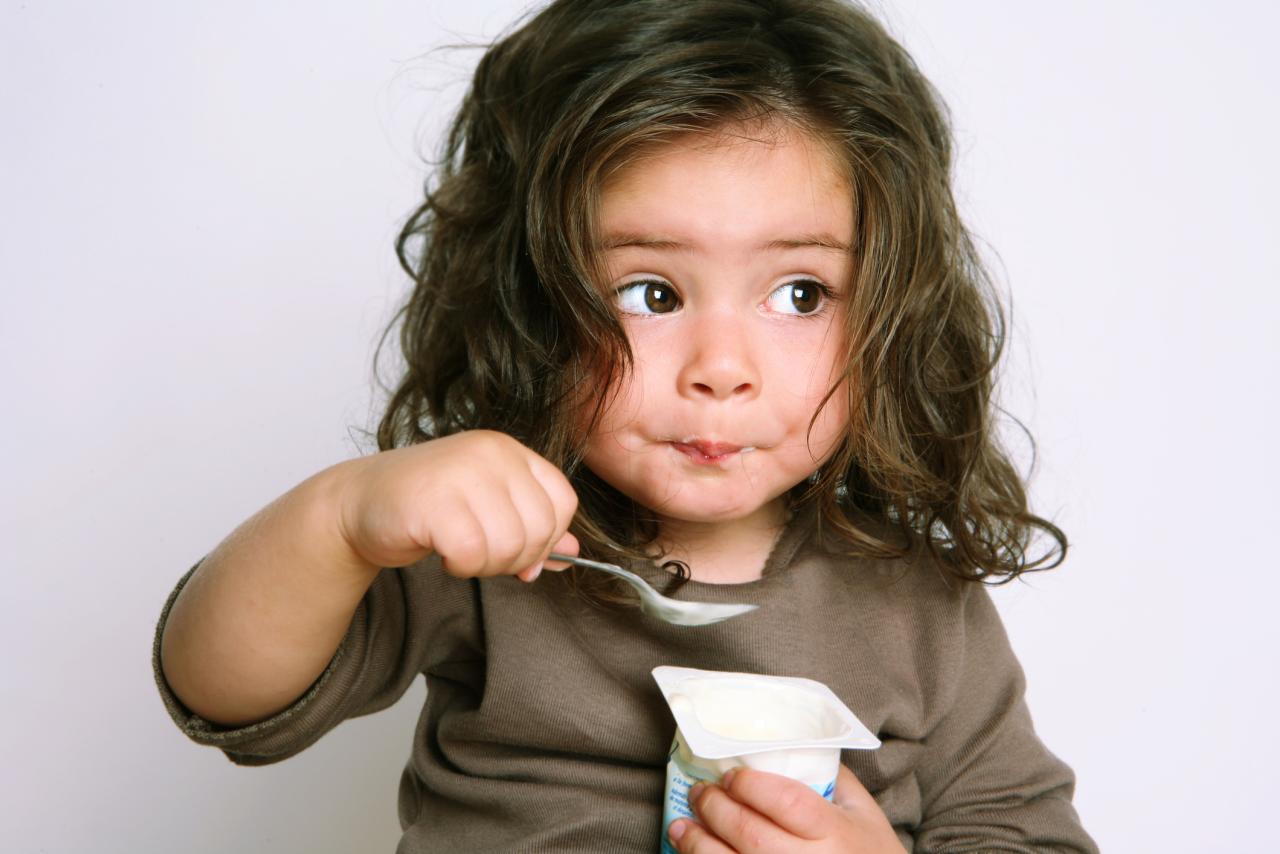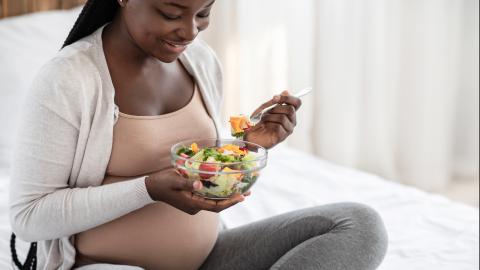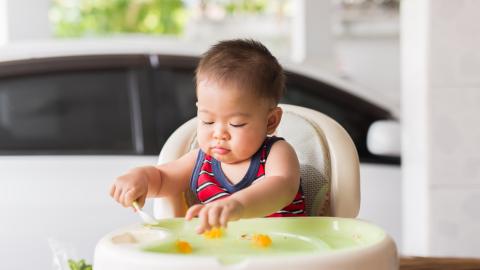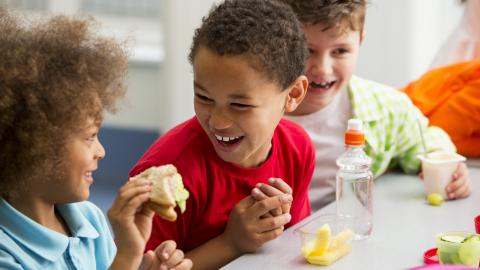Resource
Eating and nutrition for preschoolers

Healthy eating will help your child have the energy to learn and play. It's important to keep supporting them in developing healthy eating habits. Feeding your toddler can be a challenge sometimes, so providing a variety of healthy food options will help them develop good eating habits. Eating should be enjoyable, so offering brightly coloured foods cut into interesting shapes can help create a positive environment for your child to develop a healthy relationship with food. Healthy eating habits include considering your taste, culture, budget and lifestyle.
Tips for feeding your preschooler
- Have family meals together as much as possible.
- You decide what food you serve and when. Your child decides which of the offered foods to eat and how much.
- Create a mealtime routine with three meals and 2-3 snacks daily.
- Offer a variety of foods. Canada's Food Guide is a tool that can help you decide what food to prepare for meal and snacks, recommending plenty of vegetables and fruit, protein foods (choosing plant-based proteins more often), and making water your drink of choice.
- Use safe handling practices when preparing food. Visit our food safety at home article.
- Have sit-down snacks. Don't let them run around or play while eating.
- Take precautions to prevent choking. Cut up finger foods and anything that could be a choking hazard. It is also best to avoid big globs of difficult food to swallow, like peanut butter and melted cheese. Your child is still only learning how to eat.
Healthy snacks ideas
You should offer your child 2-3 healthy snacks daily to give them the energy to grow, play and learn. Each snack should have at least 2 of the four food groups from Canada's Food Guide.
Simple, healthy snack ideas to try
- Celery and red pepper sticks with bean dip or hummus
- Cheese cubes with apple slices
- Nut or seed butter on toast (e.g., peanut, almond, sunflower seed butter)
- Canned salmon rolled into flour tortillas
- Yogurt and sliced banana
- Egg salad sandwich
- Whole grain crackers and cheese
- Steamed meat bun
- Soft-cooked edamame and orange slices
- Baked beans and whole wheat toast
- Fruit and yogurt smoothie
- Roti and dal
- Crushed pineapple, canned in water, and a small muffin
- Mini pizzas on whole wheat English muffins
- Leftover chicken, rice and vegetables
- Steamed broccoli with yogurt dip
- Baked potato with cheese and salsa
- Quesadilla: beans and cheese melted into a flour tortilla
- Whole grain cereal with milk and berries
Meal planning for preschoolers
Canada's Food Guide can help you decide what food to prepare for meals and snacks. It recommends including plenty of vegetables and fruit, eating good protein foods (including choosing plant-based proteins more often) and making water your drink of choice.
Each meal should include about:
- Half of your plate filled with vegetables and fruits
- ¼ of your plate with a healthy protein (such as legumes, lean meats)
- ¼ of your plate with whole grain foods (such as whole grain pasta, quinoa, whole grain or brown rice)
Snacks can be a combination of at least two different food categories. Try some brown rice crackers and carrot sticks or apple slices and low-fat cheese.
Talk to a dietitian
If you are looking for additional support or information around feeding or nutrition information, you can:
- Dial 8-1-1 to reach Health Link BC Dietitian Services; OR
- Use the Find a Dietitian site to look for a fee-for-service Dietitian near you or how Dietitian coverage may be available using your extended health care benefits.
Frequently Asked Questions
-
My child doesn't eat much at meals. Should I stop giving them snacks so they don't spoil their appetite?
No, keep offering snacks. Children have small stomachs and need to eat more often than adults, even if it's in small amounts. Snacks are an important opportunity to give your child healthy food they may not have eaten at mealtime.
-
My child just eats all day as they're playing. Should I take the food away and only offer it at set times?
Absolutely! By offering snacks at set times, you're helping your child to eat better at meal times, learn healthy eating habits and lower the risk of tooth decay.
-
My child is cranky at dinner and eats very little. What's going on?
Your child may be too tired and hungry by dinner to sit still and focus on eating well. Try having your family meal earlier in the day, or offer a small, healthy snack 2-3 hours before dinner. It's okay if she eats less at dinner.
-
My child sometimes gets constipated (hard stool that is difficult to pass). What can I feed them to prevent it from happening?
The foods we eat can help prevent constipation. Make sure your son is drinking plenty of water and offer him food rich in fibre, such as:
- Whole grains: whole grain bread, oatmeal, bran cereal, quinoa, brown rice
- Legumes: black beans, chickpeas, lentils
- Vegetables and fruit: prunes and other unsweetened dried fruit, berries, apples, pears, and peas.
If constipation is an ongoing problem, talk to your health care provider.
Resources
-
-
Feeding your toddler (1-3 years)
Includes sample menus to help you plan - Available in English, Chinese Traditional, Punjabi, Vietnamese, Spanish, Korean and Farsi.
-
Meal and snack ideas for your 1 to 3 year old
HealthLink BC
-
Healthy vegetarian and vegan eating for toddlers
-





